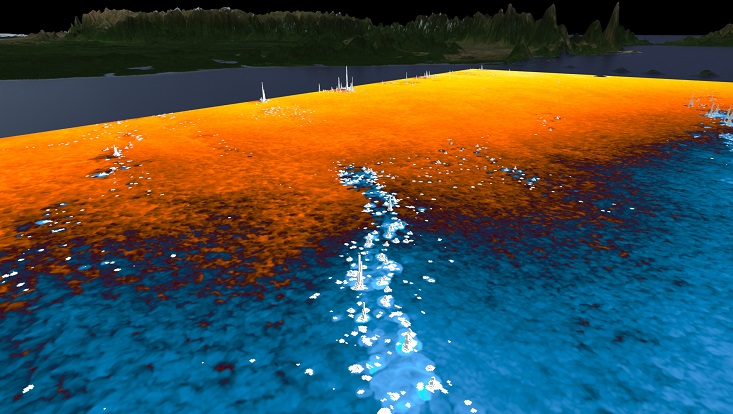Simulating mesoscale organization of trade-wind clouds with ICON-LEM

Simulating mesoscale organization of trade-wind clouds with ICON-LEM
How do trade-wind clouds organize? This question has been one of the core motivators for the EUREC4A field campaign, because until recently the trade-wind clouds were mostly regarded as unorganized. Now it has become clear that this is rather the exception than the norm. The challenge is now to incorporate these observational findings in climate simulations that are currently only starting to resolve these features as the resolution can be increased due to advances in compute power.
The animation shows one of the first simulations that is large enough (5 x 10 deg) to capture the cloud formations of several 100 km and is at the same time fine enough (156m) to produce the small-scale processes like precipitation that help form these cloud clusters. The visualization focuses on February 1st and 2nd 2020 and reveals the abundance of shallow clouds present in the downstream trades. In the steady trade-winds from the NE, air-masses are slowly transported to the west. Wind and surface-temperature anomalies reveal the ubiquity of cold pools that are generated from precipitation and give the cloud scene its characteristic look of small (O(10km)) cell structures. On the larger scale, different structures are visible, visualizing the rich variability of cloudiness in the trades.
This simulation provides a valuable insight into the complex organization of trade-wind clouds and their role in the Earth's climate system.
Details about the simulation can be found at https://doi.org/10.31223/X5H651
Simulations performed by Hauke Schulz (Max-Planck-Institut für Meteorologie). Visualization by Felicia Brisc (CEN/UHH).
